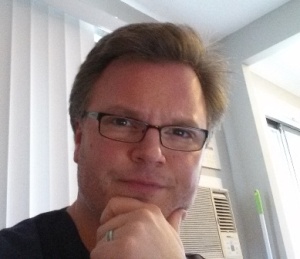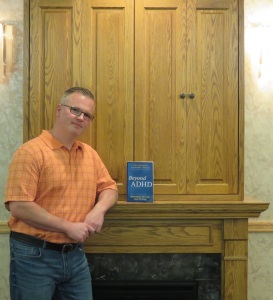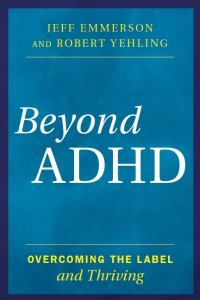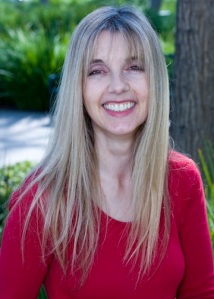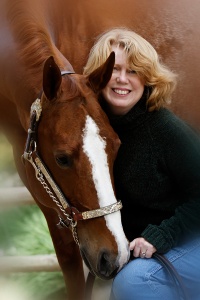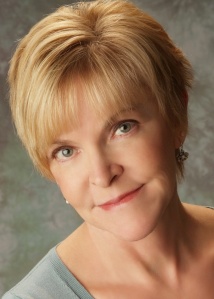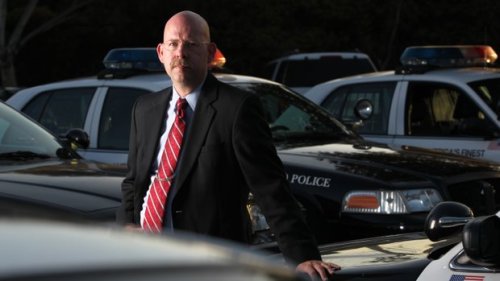VIEW THE LOS FELIZ CONFIDENTIAL BOOK TRAILER
Whenever she’s asked why so many Millennials and Generation Z men, women and teens continue flocking to the music and style of the 1960s and 1970s, Los Feliz Confidential author Nora Novak has a ready answer: “I think Millennials are recognizing a sense of excitement and freewheeling attitude of that era by listening to classic rock, and streaming movies and documentaries that portray the ‘good times’ they find appealing in a way not found in today’s device-dependent, stressful and more violent world,” she says. “I think the boomers, the internet and the media have had a hand in this, unlike previous generations.”
 Nora, who grew up in and currently lives in Newport Beach, is the author of one of the finest scenester memoirs in years, and winner of a 2017 Southern California Book Festival Award. Los Feliz Confidential takes us right inside the classic home in the Los Angeles neighborhood of Los Feliz where Nora and her boyfriend hosted some of LA’s wildest parties of the 1970s and early 1980s. But their wildness was classed up by the fetching, willowy blonde hostess, whose elegance, glamour, style and love of music turned these parties into something extravagant. With her visual descriptions and deeply honest portrayal of her own feelings, goals and hopes, Nora lures us into a narrative so rhythmic and rich that you can practically hear the songs of the period spinning on her turntable — and the lyrics weaving in and out of the narrator’s heart. If you can’t remember the titles of these memory markers, no worries: she lists them in a back, a clever piece of “soundtracking” the book.
Nora, who grew up in and currently lives in Newport Beach, is the author of one of the finest scenester memoirs in years, and winner of a 2017 Southern California Book Festival Award. Los Feliz Confidential takes us right inside the classic home in the Los Angeles neighborhood of Los Feliz where Nora and her boyfriend hosted some of LA’s wildest parties of the 1970s and early 1980s. But their wildness was classed up by the fetching, willowy blonde hostess, whose elegance, glamour, style and love of music turned these parties into something extravagant. With her visual descriptions and deeply honest portrayal of her own feelings, goals and hopes, Nora lures us into a narrative so rhythmic and rich that you can practically hear the songs of the period spinning on her turntable — and the lyrics weaving in and out of the narrator’s heart. If you can’t remember the titles of these memory markers, no worries: she lists them in a back, a clever piece of “soundtracking” the book.
But Los Feliz Confidential is much more than a musical all-nighter put to words. Nora takes us through her rich, complex world that she creates on the fly, as a trendsetting scenester and traveler completely in touch with her native Flemish roots. The fact she was born in Belgium, grew up in the U.S. with her Old World parents but never lost her connection to Flemish culture (but rather dove into and celebrated it), adds to both the perspective and depth of the book. She takes us around the world on her fascinating (and sometimes wild) adventures, one of which she shares in the interview. She also takes us into the crazy all-hours fun of 1970s Los Angeles, and into the glam rock, punk rock, hard rock and early New Wave worlds that she made part of her own. We meet her friends, and again throw ourselves on Sunset Boulevard and into the clubs and scenes that many look back on with deep reverence, while younger generations seek to know more about this time period where freedom, platform shoes, liberation, shoulder pads, creativity, long hair, imagination, art, style, and great music prevailed.
Turning all these experiences and elements into a treasure trove of a memoir was no easy task, but Novak has the chops to pull it off. She’s a fine artist, designer of her fashion line (Noraluxe Loungewear), art gallerist, actress, model, and also the author of the novel Art Damaged. She comes from a very talented family as well. Her mother, Emma Albertina Bogaerts, a lifelong storyteller, is the 105-year-old (not kidding!) newly published author of Emmy: Memoir of a Flemish Immigrant, now available in English and being shopped to publishers in Europe. Nora’s brother, Mark Leysen, is an award-winning art director and fine artist, as well as the author of Klown, his third novel (Traveling Shoes Press) about a late-night talk show host who runs for President. It definitely echoes the present state of the world.
We caught up with Nora recently. To get your Black Friday book shopping chops going, here is what she says about life, L.A., making scenes, and Los Feliz Confidential.
Word Journeys: Los Feliz Confidential is an epic scenester read – the incredible LA music-fashion-art scene and how you and others showcased and helped define it in your travels and daily lives. Could you talk about the amazing chemistry that exists between music, fashion and art, and why it was so definitive of a generation? And still is?
NN: Because that generation (talkin about my ge- generation) experienced an explosive time of cultural change, social mores, pop art and particularly British rock that spawned new looks in fashion as a lifestyle. There was an innovative and artistic energy that changed the way people dressed. The 70’s rock-infused fashion had an element of sensuality and glamour with an edge that I certainly favored and is still being recycled today. Innovative new artists, designers, bands and clubs emerged in L.A. and provided a more artistic expression in fashion. It all played out with the music creating a dazzling decade that many look back on for inspiration today.
A good example is Stephen Spouse collaborating with Debbie Harry in the 80’s and Jeff Koons collaborating with the new Louis Vuitton line today. Music blasts at every fashion collection. I think music, fashion and art have always had an evolving synergy.
WJ: Take us through your writing process for Los Feliz. How did you pare down your countless experiences into a tightly written 200-page book? What themes and points did you emphasize? And tell us about your decision to basically “soundtrack” the book, with songs listed for each chapter.
NN: First of all, I wrote what I could remember! I could have added many more stories, but I chose to keep it moving like the fast pace I was living at the time. I wanted to emphasize the difference of how immigrating here made me feel and my fearless sense of adventure. I tried to be give my stories a visual sense of the fashion and look of things, the easiness of life at that time. Everything I wrote about had music running through my mind, reflecting the time, so I naturally made many musical references. When I finished I was compelled to write a Playlist for each chapter, which I really enjoyed doing.
WJ: What are three of your favorite tales that you share in the book? And the funniest?
NN: Well (spoiler alert!), I do share an interesting story about my relationship with a Jordanian arms dealer and his Ambassador brother. There’s a tale about my first skiing experience – which also proved to be my last – and a humorous girl/girl story. I think the story about an ENT treatment given by my boyfriend’s surgeon dad is hilarious but for me it all seems humorous now. I’m still laughing!
WJ: You are the daughter of a very take-charge, dominant father and a warm, artistic mother. How did that parent combination shape you as both a person and an artist?
NN: My father, although a stern and unpleasant man, instilled a strong sense of discipline and a somewhat sardonic outlook. However, he was responsible for my love of art and photography, for which I am grateful. My mother, on the other hand, emanated femininity, graciousness, a pleasant demeanor and sense of humor. The combination definitely shaped me as an individual and shows up in my work as an artist, as I generally incorporate female photographic images in my glossy mixed-media collages.
WJ: What struck me about your journey is how you took part in the lifestyle and excesses of the day, yet you always seemed to have a sense of who you were and what you wanted. How did you maintain that compass, if you will, of how to go forward?
NN: I readily enjoyed the excess and decadence of the times; it was a Bacchanalian era for rock ’n’ roll. Everything seemed so glamorous and indulgent, and was completely accepted in the L.A. that I knew. I did have goals though, like a working schedule and a sense of enough discipline that probably prevented me from becoming another Hollywood fatality. Many didn’t make it.
WJ: You write of your affinity for Bryan Ferry and Roxy Music. What was it about his voice, music, lyrics, and presence that captivated you? What do you feel musicians today can learn from their predecessors in terms of delivering from heart and soul vs. making a hit?
NN: Bryan Ferry evoked a sultry, seductive kind of singing unique from other rock stars. Not to mention his suave, good looks, elegant style, sophistication and harmonica playing that simply resonated in a big way for me. I thought his music and lyrics quite beautiful and loved his sexy album covers. It seems like everyone can sing today with a huge range and big powerhouse voices, but at the end of the day, it’s generally the more unique voice with soul and a great tune that becomes the hit. The late Amy Winehouse comes to mind.
WJ: You’ve also been creating works of art. Tell us about those.

Nora Novak’s “Nico”, honoring the late New York scenester and Velvet Underground singer. Part of her Femme Fatale collection.
NN: I started a new series, my “Femme Fatale” collection. I just finished three mixed-media collages, that can be seen on my website noranovak.com and will be exhibited soon. I’m thinking about starting another book next year, possibly a sequel to Los Feliz Confidential, picking up where it left off moving into the crazy 80’s.
WJ: Lightning Round: Who are your five favorite authors? Musicians or bands? Artists? Fashion designers?
NN: My favorite authors? When I was young, I would say John Steinbeck and Jack Kerouac. I that progressed to Hunter S. Thompson and Charles Bukowski, and more recently Irvine Welsh and Edward St. Aubyn. Musicians: It’s still Bryan Ferry, Iggy and the Stones and Amy Winehouse, miss her. Artists: Jan Van Eyck, Kees Van Dongen, Mark Rothko, Andy Warhol and Julian Schnabel to name a few. As for designers, Dries Van Noten, Roberto Cavalli, Dolce and Gabbana, love the vintage Halston — and my own Noraluxe Loungewear line, of course!
WJ: Final question: If a musician came up to you and said, “Hey girl, I want to play you one song that speaks to who you are,” what would that song be? And who would be playing it?
NN: Well, I would love it if that musician was Bryan Ferry. I’d request his cover version of Dylan’s “Just Like Tom Thumb’s Blues”, but wait; can I get one with Iggy on vocals, Mick on harmonica and Keith on guitar, and they can play whatever they want?
WJ: Let us cue it up! Thanks so much, Nora, for a fun and enlightening look into an era so wonderfully captured in Los Feliz Confidential.




